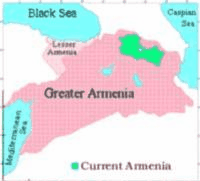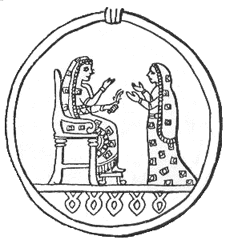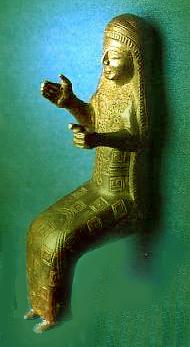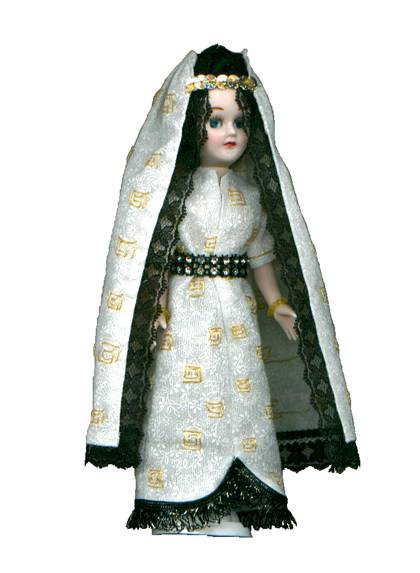Back to the collection
Home page
Next doll
Previous doll
 Flashing arrow shows regional origin of this costume
Flashing arrow shows regional origin of this costume
HISTORY
It is a replica of a medallion unearthed by archaeologists at Toprak Kale near Lake Van,
which some 3,000 years ago was the site of the capital of the Kingdom of Urartu. The

|
Gold medaillon excavated at
Torpak Kale by Germans.
On exhibit at the Berlin Museum.
|
Urartians were the geographical, historical and cultural ancestors of the Armenians.

|
Bronze statuette of Arubani,
Van, 9th Century B.C.
|
They created, in the first millenium B.C., an advanced civilization in the area
stretching between Lake Van and Mount Ararat.
The figure on the medallion has been identified as Arubani, earth goddess of
fertility and art, and the wife of Khaldi. Her gown is similar to bronze statuette
(9th century BC) of Arubani found in Van. The statuette is a 12 cm (2 and 11/16")
figurine is in a sitting position, and was probably placed in a small shrine on a
chair or throne. Arubani is the Urartian equivalent to the Armenian goddess Anahit
and the Greek goddess Artemis.
Top of page




